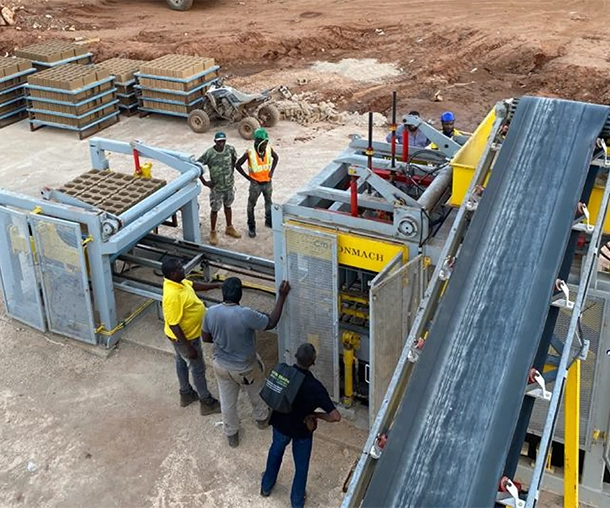How to make concrete blocks? The construction of concrete blocks involves a delicate process of mixing, molding and curing the concrete. Initially, cement, water and aggregates such as sand or gravel are combined in specific proportions to create a homogeneous mixture. This mixture is then poured into molds to shape the blocks. The blocks then undergo a curing process, typically left to harden under controlled conditions, ensuring that they achieve the required structural integrity.
How to make concrete blocks? The use of machines in this process is crucial for both efficiency and quality. Automated machines enable large-scale production by rapidly mixing the materials and molding the blocks with precision. This not only speeds up the process but also ensures that each block meets consistent standards of size and strength, reducing the risk of human error. In industrial settings, machine-operated production lines are essential for meeting high demand while maintaining the high-quality standards expected in the construction industry.
How To Make Cement Concrete Blocks
Creating cement concrete blocks is a fundamental process in the construction industry, serving as the backbone for various building projects. One popular variant is lightweight concrete, which is preferred for its reduced density and superior thermal insulation properties. This type of concrete is often used in the production of blocks that are easier to handle and transport, making them ideal for non-load-bearing walls or partitions within structures.
The production process begins by preparing a mix of cement, water, and aggregates, with specific attention to the type and size of the aggregates to achieve the desired properties. The mixture is then transferred to a making machine that precisely molds the blocks into standard shapes and sizes. The use of such machinery ensures uniformity and quality in each block, which is essential for large-scale construction projects.
In addition to standard concrete blocks, aerated concrete blocks are gaining popularity due to their enhanced insulation and lightweight properties. These blocks are created by introducing air bubbles into the concrete mixture, resulting in a porous structure that improves thermal efficiency.
Another common type used in construction is cinder blocks, which are made using a mix of cement, water, and cinders (a type of industrial waste product). Cinder blocks are known for their durability and are often used in foundations, retaining walls, and other structural applications.

The versatility and efficiency of cement concrete blocks make them indispensable in modern construction. Whether it’s a residential building or a commercial complex, the right choice of concrete blocks, coupled with advanced production techniques, can significantly enhance the durability and performance of the structure.
You can contact CONMACH for detailed information about concrete block machines.